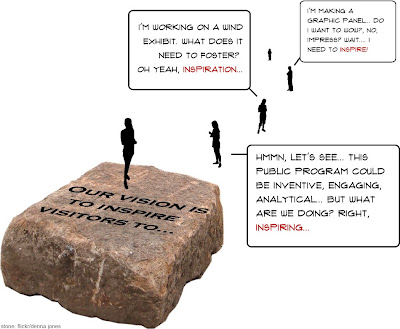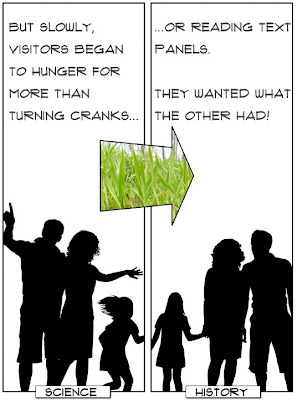
Having a well-defined vision can be more empowering than laying that first stone. If it's clear and unique enough, your staff can apply it easily. Then you've given them a conceptual guide... or legacy that will outlive you and your building.
Think of Frank Oppenheimer at the Exploratorium- his values are carrying on long after he's gone. Another example is Al De Sena's vision from Exploration Place. To this day the staff at Gyroscope can cite it. It sheperded the exhibit development process by giving the team a point of view that helped them determine what to include and what to leave out.
We asked ourselves, does this exhibit idea help the visitor:
"Inquire, imagine, express, and design?"
It's important to have a vision that lets you exclude things. That helps define who you are, and who you are not. As my mom would recite: "You can't be all things to all people, Maria."


















